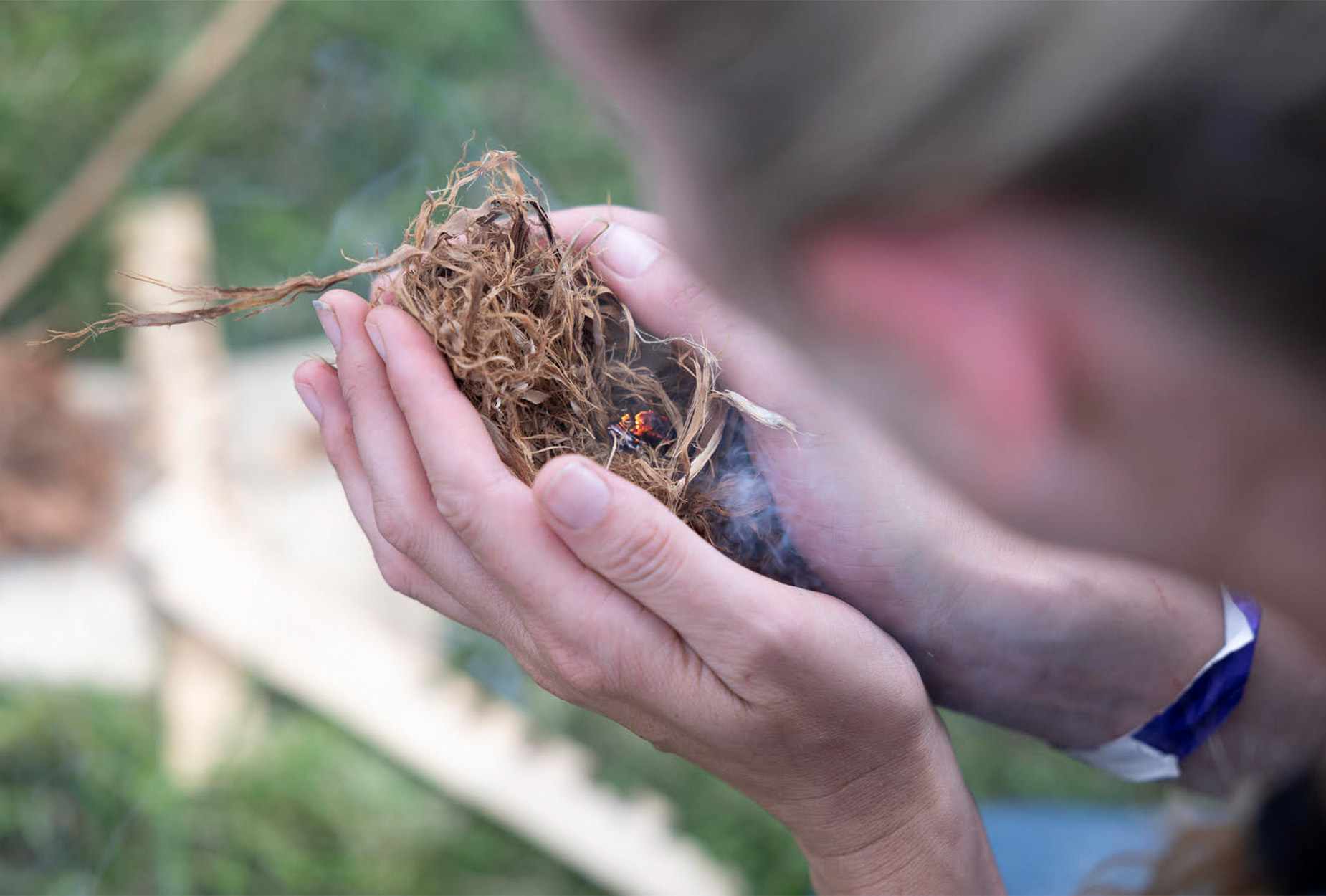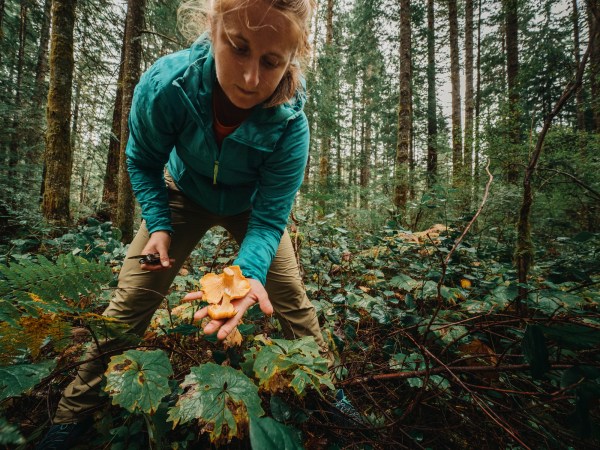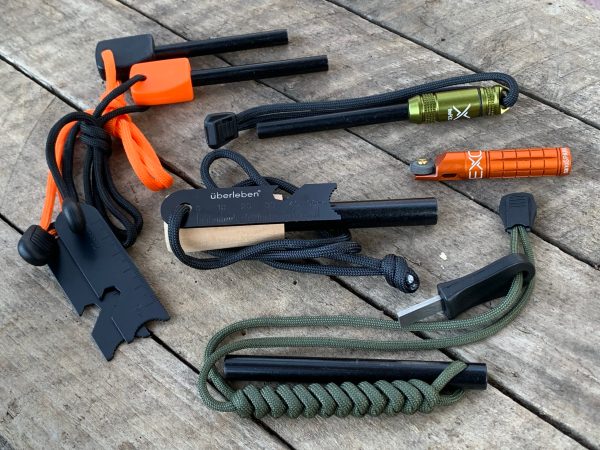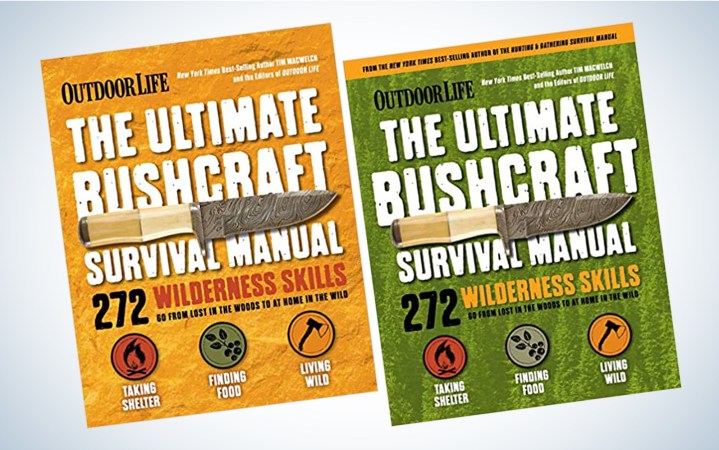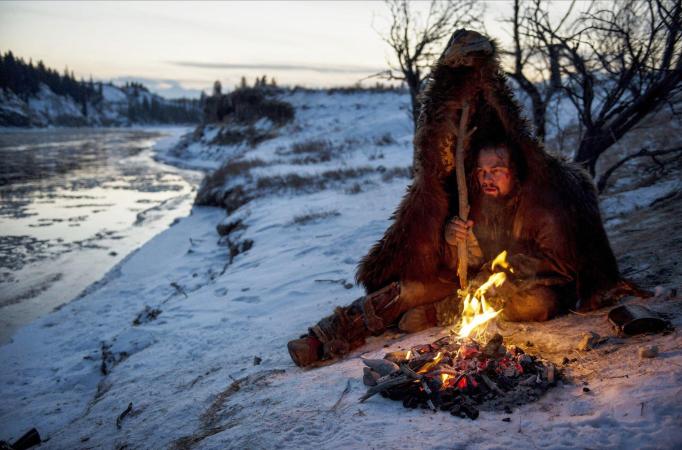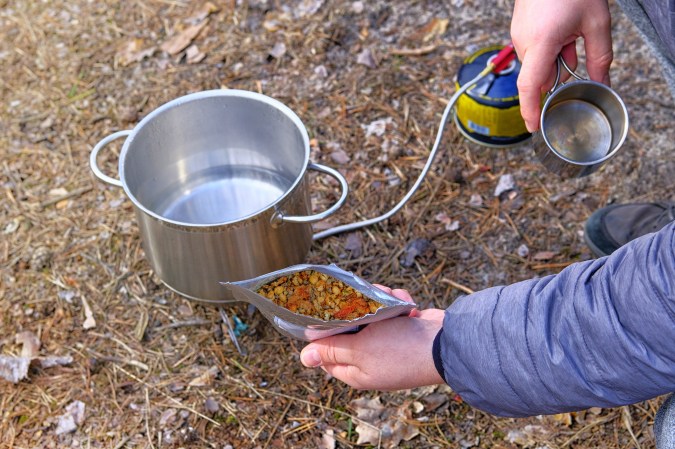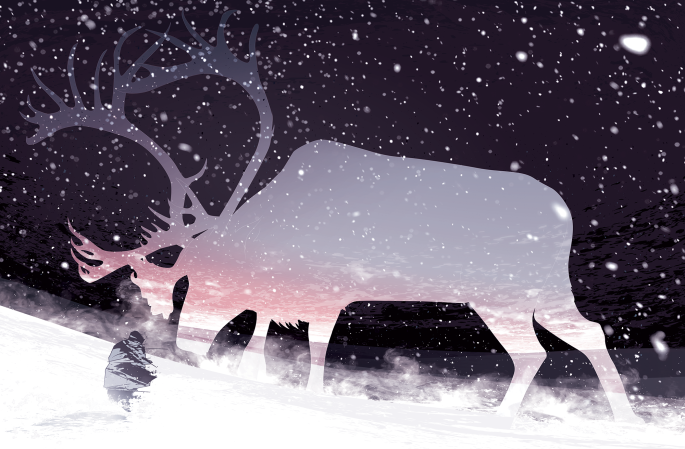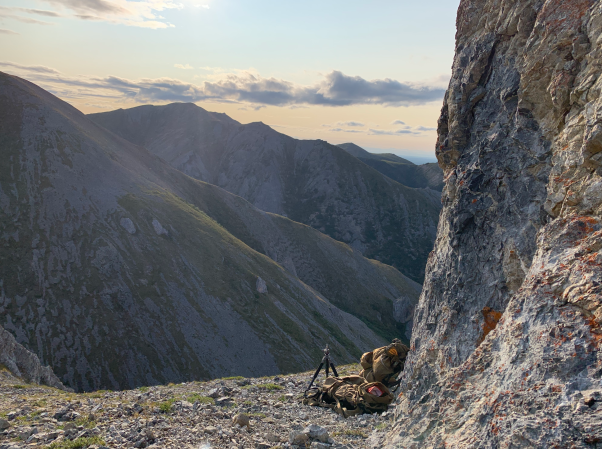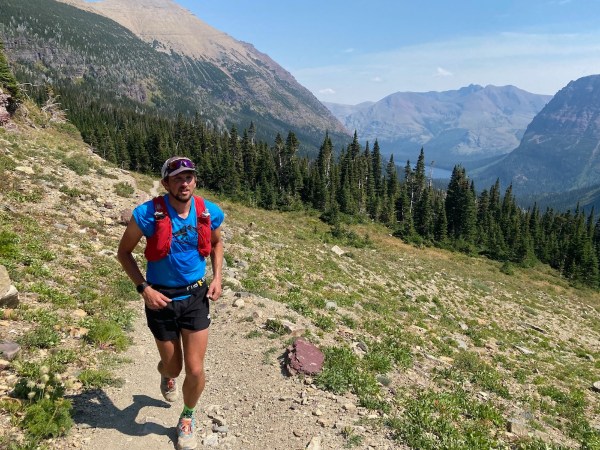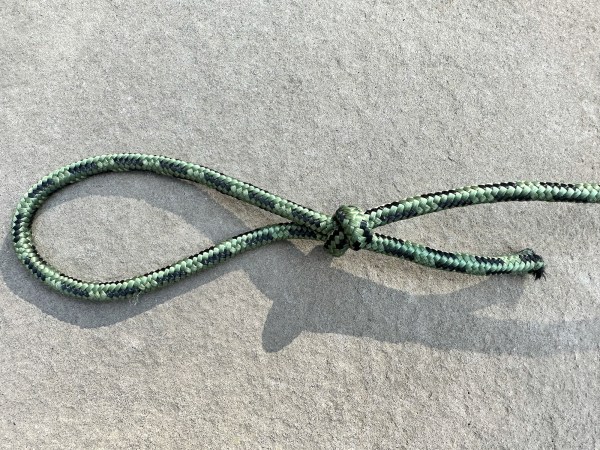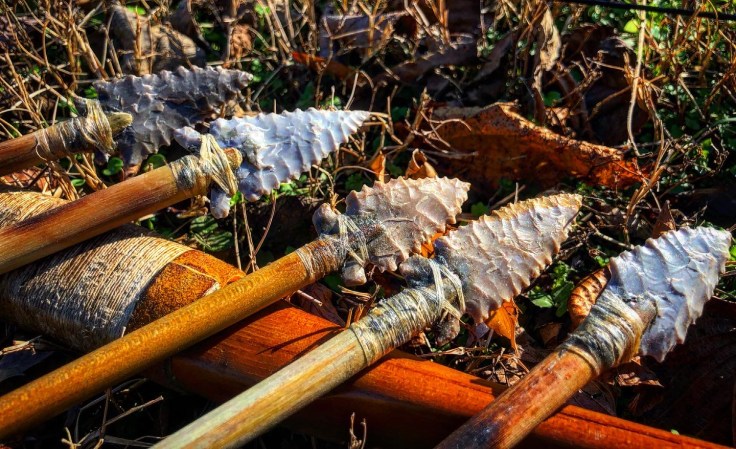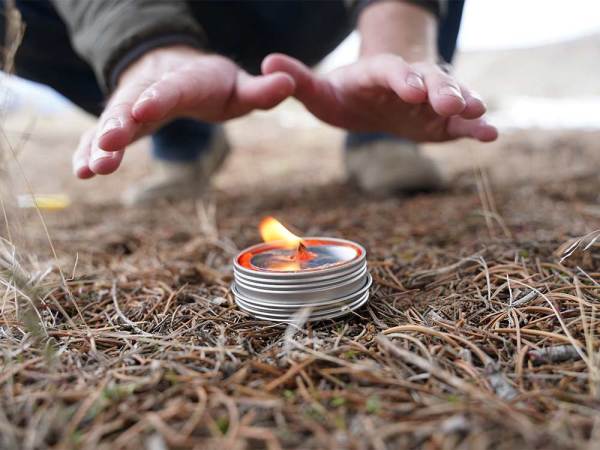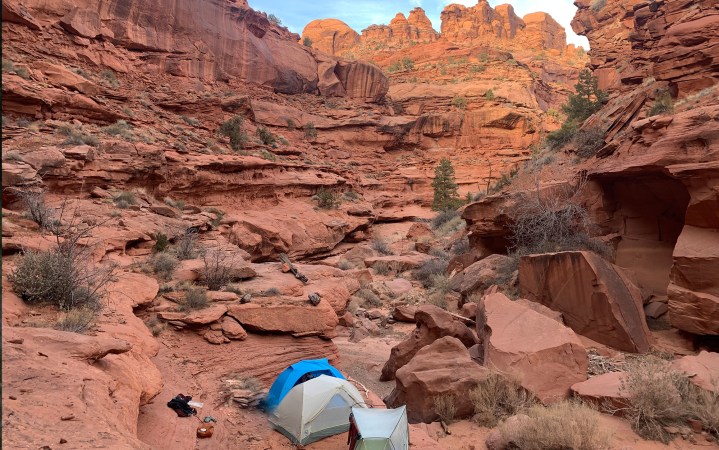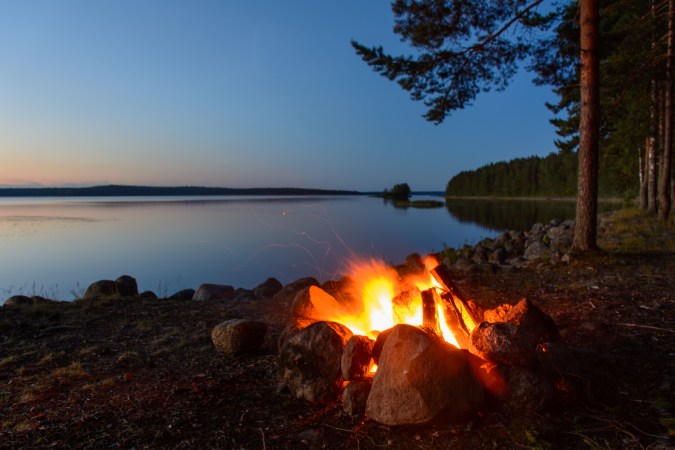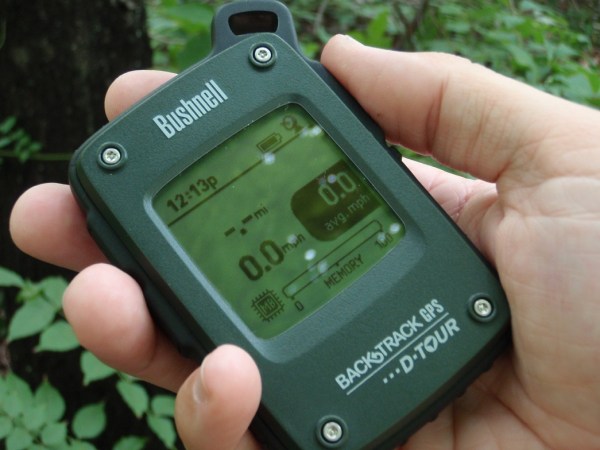Bushcraft is about wilderness survival on the most practical level. But at its core, bushcraft is about more than just staying alive. It’s the art of thriving in the woods with primitive tools and skills that have been passed down through generations. Bushcraft is all about attaining a deeper level of interaction with the natural world. It involves a range of important outdoor skills such as shelter-building, tool-making, foraging, fishing, and navigating. The philosophical underpinnings of bushcraft involve sustainable resource use and the willingness to sacrifice modern-day conveniences like lighters and gas stoves.
“All of our ancestors did these things, but we’ve lost that knowledge,” bushcraft expert and Alone runner-up Karie Lee Knoke tells Outdoor Life. “Bushcraft is about keeping those traditions alive.”
Defining Bushcraft
Pinning down an exact definition of “bushcraft” is difficult because there are differing ideas among the bushcraft community. There’s a lot of overlap between bushcraft and survival skills, but at their core, survival skills center around enduring unexpected situations in the wild with the goal of returning to civilization as quickly as possible. Bushcraft, on the other hand, is more about a purposeful and prolonged experience in the wilderness.
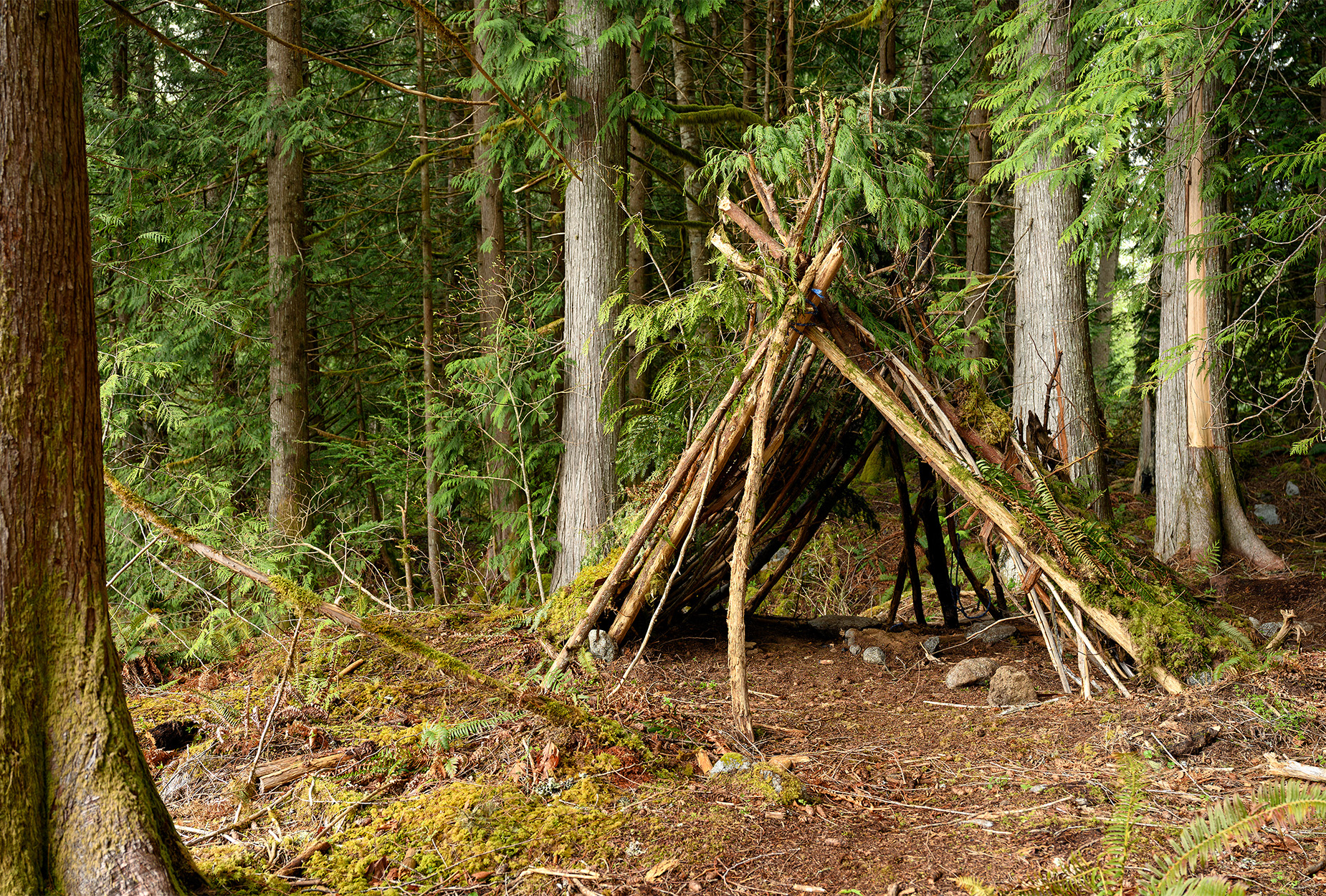
Photo by Ferenc / Adobe stock
Experts like David Wescott have drawn parallels to what he calls “the golden age of camping” in the late 19th and early 20th centuries. This was before GPS and other technology came along, when outdoorsmen emphasized finding their own way in the wilderness and living off nature’s storehouse.
Wescott, a longtime primitive skills instructor and the owner of educational platform Backtracks, which hosts primitive skills gatherings like Winter Count and Rabbitstick, says bushcraft skills have always come from the land. In today’s world, however, many of us have to relearn those skills.
“We always try to offer skills that are entry level, hands-on experiences to get people familiar with tools,” Wescott says. “The goal is connecting their hands, heads, and hearts to create something beautiful out of simple materials with simple tools.”
Basic Bushcraft Skills
Basic bushcraft skills include:
- Finding and purifying water
- Fire-making
- Foraging
- Hunting with primitive weapons
- Trapping with hand-made snares
- Knot-tying
- Navigating
- Shelter-building
- Using and making hand tools
These skills can then be honed according to the environment hwere you are.
“In an area where you don’t have 365 days of sunshine, shelter and fires can be really important,” Knoke says. “In the Southern states, it’s [all about] getting water.”
Once you master basic bushcraft skills like starting a friction fire or making a shelter with natural materials, you can start picking up more advanced skills like tanning hides and identifying edible plants.
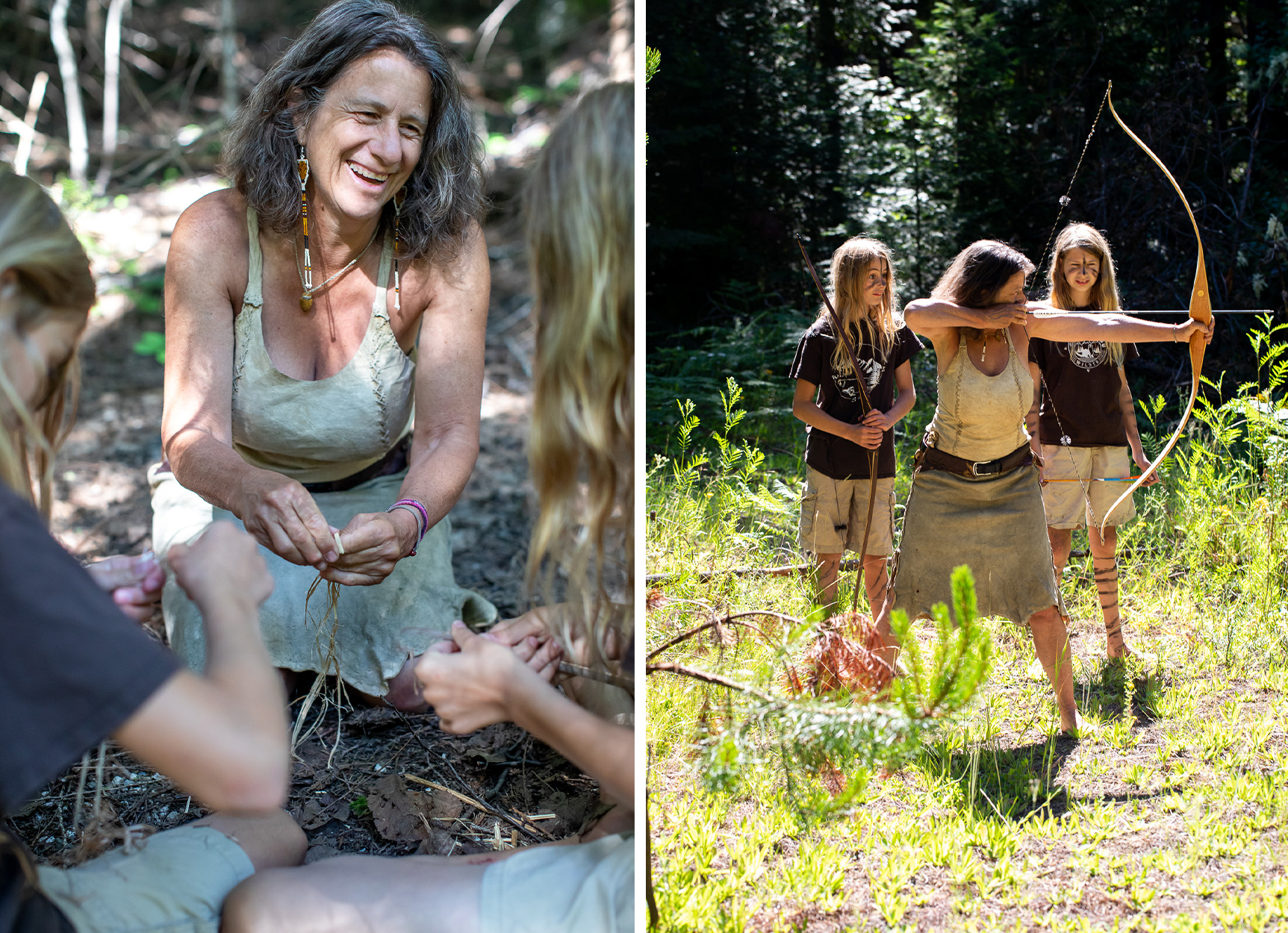
Photo by Fiona Hicks Photography
Hunting, fishing, and trapping for sustenance are also a big part of bushcraft, as long as they’re done in a primitive manner, using methods like traditional bowhunting. Fishing bushcraft-style could mean building your own cane pole, making handmade hooks, or setting up a fish trap in the shallows. The key is using what little resources you have and supplementing them with what the land offers.
Fire
Fire-making is a quintessential bushcraft skill. A fire keeps you warm, cooks your food, boils your water, and signals for help if needed. There are plenty of ways to start a primitive fire, from bow drilling to using fire steels.
Bushcrafters quickly learn to identify the best types of wood for burning, the best structures to keep a fire going, and the best materials for tinder — think dry leaves, twigs, bark, and resinous wood from pine trees (also known as fatwood). Keeping the fire a safe size and extinguishing it properly are equally important.
A range of bushcraft skills can come in handy to make a basic fire. You can:
- Use a handsaw to cut wood into manageable pieces
- Use a hatchet to split those pieces into smaller, kindling-size pieces
- Put all this fuel into a basic stove made from a tin can
You can always learn more about the different ways to start a friction fire, the best fuel for tinder, and other fire-making tips by reading past Outdoor Life articles.
Shelter
Knowing how to make different kinds of shelters is key, whether these are fully framed shelters or improvised ones. The type of shelter you use also depends on the environment and available resources. Bushcrafters have long drawn inspiration from Indigenous cultures by using natural materials like snow, pine boughs, and animal hides to build shelters. In pinch, this could be as simple as building an improvised lean-to with some branches against a tree trunk.
For beginners, Wescott recommends experimenting with a basic square tarp and paracord. A tarp can provide quick and effective cover and enhance any shelter frame, including the classic A-frame, which only requires a tarp, some cord, and two attachment points.
“You can create thousands of different shelter designs out of a tarp,” Wescott says.

For an in-depth look at some of these shelter designs, read this article by Outdoor Life contributor and survival expert Tim MacWelch, which touches on the A-frame along with other basic designs:
To get started [building your A-frame], suspend a line of cordage between two trees or similar supports. Lay your tarp over the line and tie down all four corners of your tarp. This shelter is a great addition to a tarp hammock or strung up over a springy bough bed. You can even use a poncho as an A-frame tarp shelter.
Knots
Knowing how to tie a knot is essential for constructing a shelter, setting traps, securing gear, and countless other outdoor tasks. It’s also important to understand the different categories of knots and when to use them. These primary categories include:
- Loops: used to create an attachment point or a hold in a rope
- Hitches: used to tie a rope to an object or secure a load
- Bends: used to connect two ropes together
- Lashings: used to tie objects together
Some key knots for beginner bushcrafters to learn include:
- The bowline knot
- The improved clinch (or fisherman’s) knot
- The reef knot
- The square knot
- The trucker’s hitch
Each of these basic knots has a specific purpose but can be applied to different scenarios. A bowline, for example, can be used to connect rope to a grommet on a tarp, while a trucker’s hitch can help secure a heavy load in a canoe. Wescott recommends carrying a length of rope in your pocket so you can practice tying and untying a few knots until you get them down.
“If you understand maybe two out of each character category, a loop or a joint or an attacher, you can do everything you need,” Wescott says. “But you have to have a repertoire of at least half a dozen knots that you can tie in your sleep. Get good at it, get quick at it and know where to apply [them] properly.”
Sourcing and Purifying Water
Finding and purifying water is crucial. A natural water source can be a lifeline, but it can also harbor harmful pathogens. Those pristine-looking streams and lakes? They could be teeming with giardia and other harmful stuff you don’t want to drink.
Boiling water from a nearby stream or lake is a tried-and-true method. Sometimes these sources aren’t accessible, however – mountain hunting at high elevations is just one example – and you’ll have to get creative to find water.

Bushcrafters learn to rely on a number of different primitive water collection systems. One example is a simple solar distillation setup, something OL contributor Tim MacWelch has also explained in a previous article:
To build one, place a square of clear or milky plastic (5×5 or 6×6 feet) over a three-feet-deep hole with a clean container centered in the bottom. (Run a drinking tube from the container so that you can drink your gathered water without taking apart the whole still.) Place dirt around the edge of the plastic at the rim of the hole to seal off the still. Place a rock in the middle of the plastic to create a roughly 45-degree cone over the container. Dig the still in a sunny location and in the dampest dirt or sand available. Add green vegetation and even urine to the hole to increase its water production.
The Basic Tools of Bushcraft
Making and using tools are key skills for any bushcrafter. You’ll want to start with just the essentials: a good knife, fire starter, a length of rope, a container, and a tarp (9 feet by 9 feet is a good size). As your skills develop, you can eventually learn to make other things, like a clay water pot, a wooden spoon, or cordage made from plant material.
Keep Your Knife (and Your Brain) Sharp
A good knife is indispensable, and it’s the most essential tool for any bushcrafter. The best bushcraft knives are sturdy with grippy handles and heavy-duty blades.
“It needs to be comfortable in your hand and able to keep a sharp edge,” says Knoke, who prefers a fixed blade knife. She adds that out of the dozens of blades she owns, her favorite is a handmade one that cost around $40.
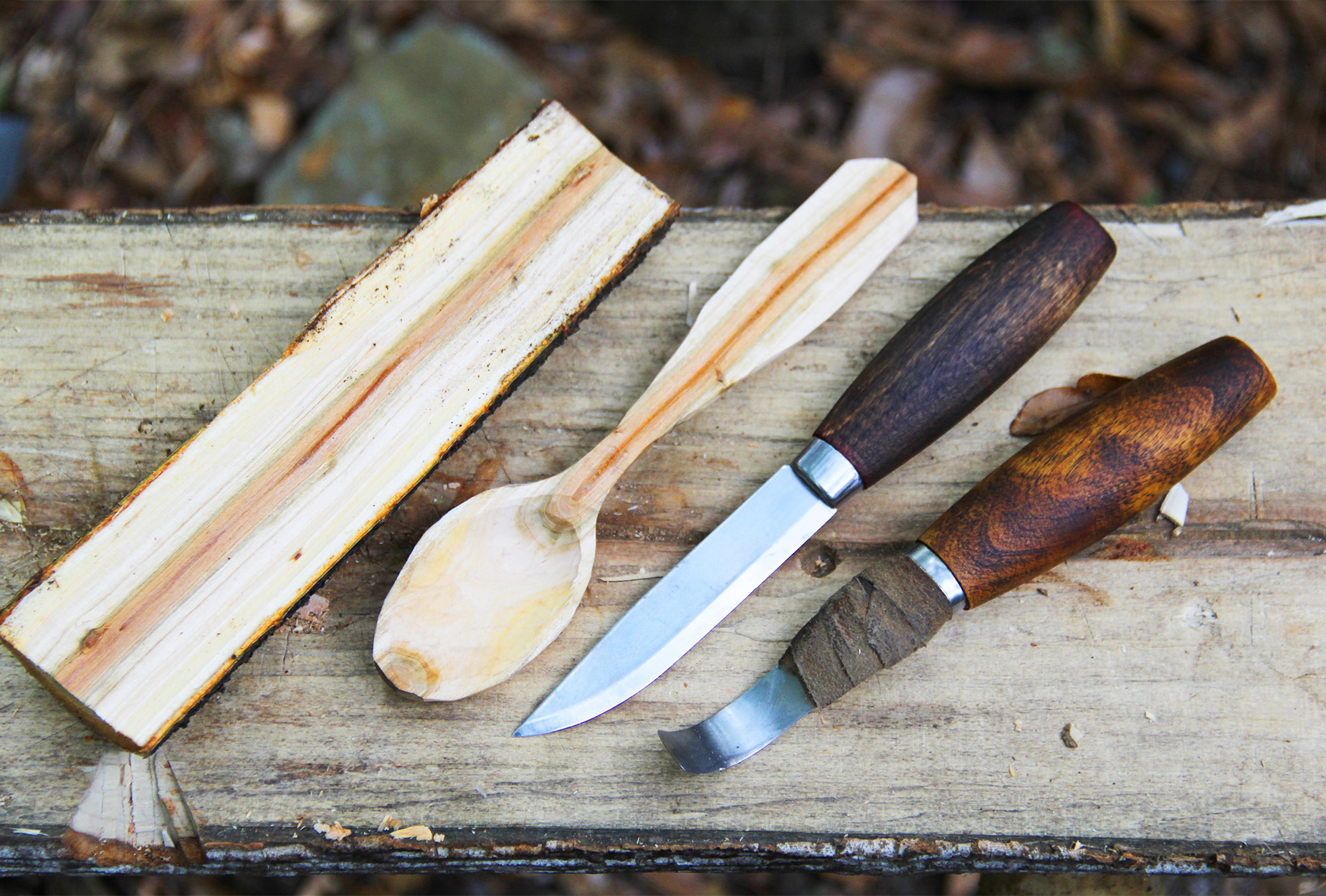
Photo by David Wescott
Other helpful implements for fire-making and shelter-building include axes, saws, and shovels. There are plenty of options out there, and the best camping axes don’t have to cost you much, either. Wescott cautions against constantly replacing your kit with the latest and greatest options, and says it’s better to get comfortable with the tools you already have. Knowing how to properly sharpen and maintain your equipment is just as important as knowing how to use it.
And let’s not forget the most important tool of all: your brain. Acquiring knowledge and building on it are essential to keeping this tool sharp.
“With [more] knowledge, you’ll learn how to make cordage and you’ll learn how to take a rock and make a knife or cutting edge,” Knoke says, noting that her ability to identify edible plants gave her a leg up on the other contestants in Alone. “If you know the right stones, you can make a fire if you find a piece of flint.”
Getting Started in Bushcraft
Setting out on your bushcraft journey is impossible without hands-on practice. Finding a mentor can shorten the learning curve, and if you don’t know anyone, consider enrolling in a bushcraft class or a workshop. There are wilderness schools across the country that offer courses for all skill levels, allowing learners to build their confidence. A primitive skills gathering is another great place to get instruction and connect with other bushcrafters.
Books and older reference materials are also great for gaining foundational knowledge. You can learn a lot from some of the best survival books and other titles that focus specifically on bushcraft and primitive skills. Wescott says there’s a huge literature base from around the turn of the 20th century that can still be found online. The internet is also full of resources on bushcraft, although Knoke and Wescott caution against taking online content at face value.
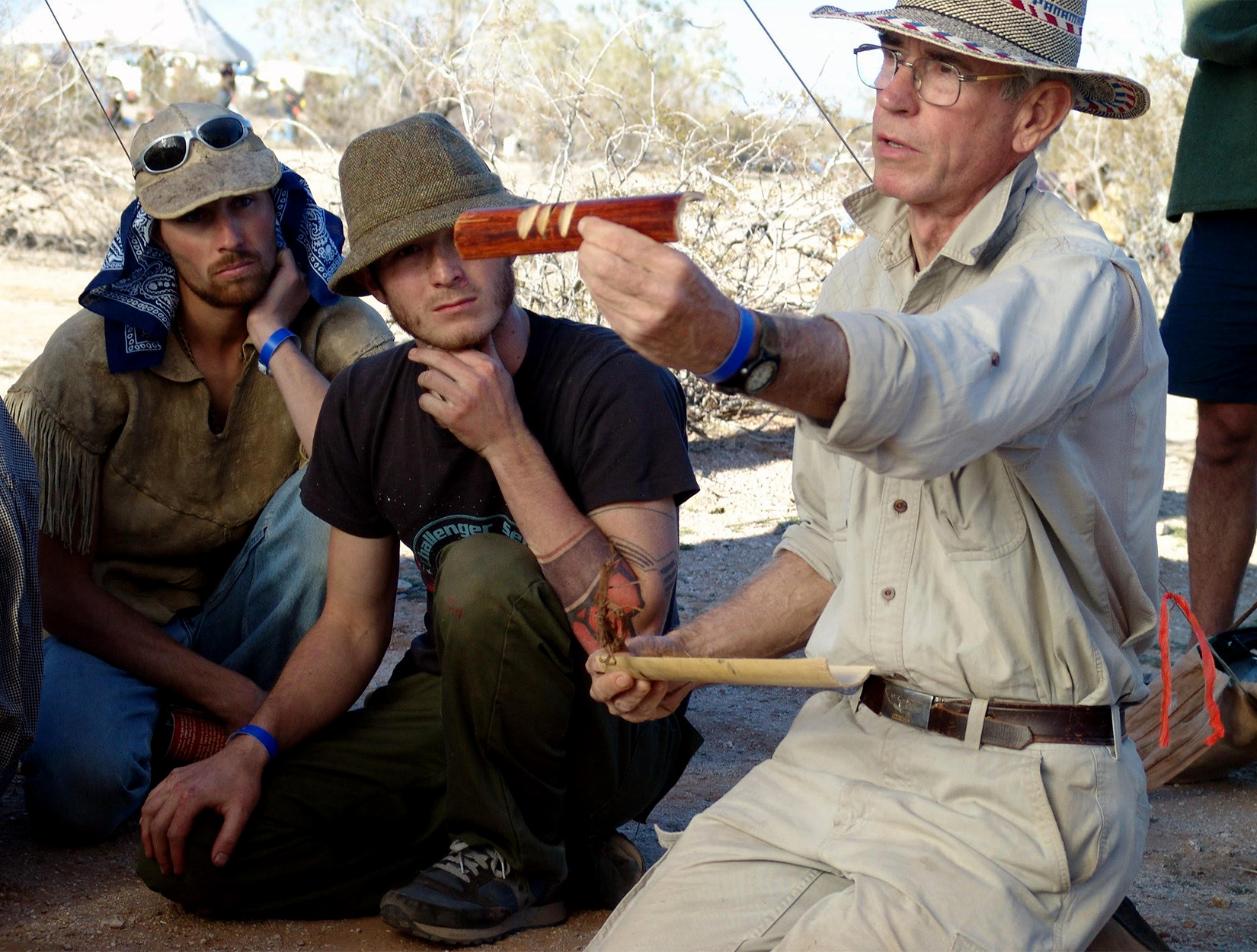
Photo by David Wescott
“You can type in ‘bushcraft’ on YouTube and watch videos until the cows come home from 50 million different experts who have no field time but have lots of camera equipment,” Wescott says. “It provides access to information but it doesn’t provide access to mentor experience.”
Despite its drawbacks, the internet has helped introduce bushcraft basics to a much wider audience, and Knoke says she’s found some online resources particularly helpful when learning more specific and advanced skills. Similarly, due to the growing popularity of bushcraft, there are many new wilderness schools and online experts popping up. It’s important to do your research when looking for new sources of information and teachers, and it never hurts to have more than one mentor.
Bushcraft FAQ’s
A bushcrafter practices primitive survival skills that enable them to exist in harmony with nature and the environment around them. Exactly what a bushcrafter does and what their day looks like varies depending on someone’s location and skill level. A bushcrafter might start their day by tending to a fire, boiling water, or foraging for edible plants. They may spend time chopping wood, sewing clothing from buckskin, or tanning hides. Essentially, they use a keen understanding of their environment to thrive.
Tools are an essential part of bushcraft. Introductory bushcraft courses often begin with learning to use basic implements, which are often chosen for their reliability and versatility. Experts like Wescott emphasize the importance of becoming proficient with basic items like a knife, rope, and fire starter, rather than relying on the latest gear. This approach highlights bushcraft ethos of skill, respect for nature, and self-sufficiency.
Bushcraft living off the grid is about disconnecting from modern conveniences and incorporating bushcraft skills into your daily life. Knoke, for example, lives off the grid in a yurt without power, running water, or a sewer.
Bushcrafting builds physical and mental resilience. It teaches patience and respect for nature, while providing a sense of fulfillment in meeting one’s needs without the help of others or modern conveniences.
Final Thoughts on Bushcraft
“It’s about the experience with the backcountry and the wild environment,” Wescott says. “If you’re in your tent and you zip yourself up, you never experience it.”
Bushcraft is all about learning how to adapt and thrive in the wilderness by using primitive tools and re-learning forgotten skills. Mastering these skills can allow you to live comfortably in environments that are oftentimes uncomfortable, while cultivating a deeper connection with the natural world.
